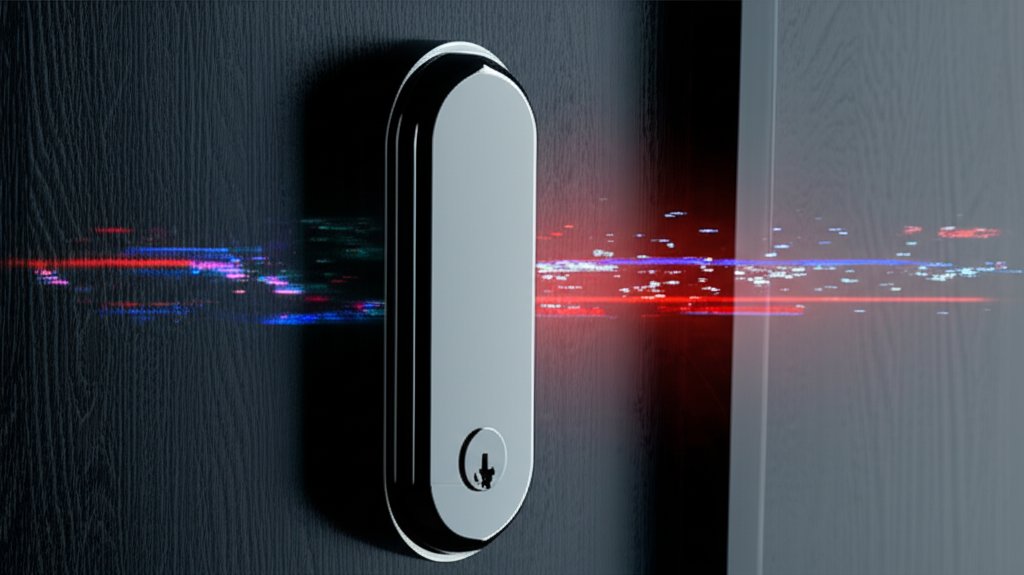In our increasingly digital world, we rely on encryption every single day. It’s the invisible shield that protects our online banking, our private messages, and our business data. But what if that shield suddenly became vulnerable? That’s the profound question posed by the rise of quantum computing — a revolutionary technology that threatens to dismantle the very encryption standards we depend on.
This isn’t a distant science fiction scenario; it’s a critical challenge we cannot afford to ignore. This is precisely why quantum-resistant algorithms — a new generation of digital locks engineered for the future — matter more than ever before. We are on the precipice of a significant digital security transition, and understanding it now is paramount to future-proofing your data and ensuring continued control over your digital security.
This comprehensive FAQ will serve as your guide to understanding this complex topic. We’ll translate the technical threats into understandable risks and, most importantly, empower you with practical solutions for securing your data in what experts call a “post-quantum world.”
Table of Contents
- What is encryption, and why is it so important for my daily online life?
- What exactly is a quantum computer, and how is it different from my regular computer?
- How do quantum computers threaten current encryption methods like RSA and ECC?
- What is the “Harvest Now, Decrypt Later” threat?
- What are Quantum-Resistant Algorithms (QRAs), and how do they work?
- What is NIST’s role in developing quantum-resistant algorithms?
- When do we need to start worrying about quantum computers breaking our encryption?
- How will the shift to quantum-resistant algorithms impact my online banking, email, and cloud storage?
- What is “crypto-agility,” and why is it important for small businesses?
- What steps can everyday internet users take to prepare for a post-quantum world?
- What should small businesses do to assess and transition their systems?
- Are there any hybrid approaches for security during the transition period?
- What is the path forward: building a more secure digital future?
Basics
What is encryption, and why is it so important for my daily online life?
Encryption is essentially a sophisticated digital lock and key system that scrambles your information, rendering it unreadable to anyone without the correct “key.” It is absolutely fundamental to our online privacy and security, ensuring that sensitive data remains confidential as it travels across the internet or sits stored on your devices.
You encounter encryption constantly throughout your day, often without even realizing it. When you securely log into your online bank, shop on an e-commerce site, send an email, use a VPN, or store files in the cloud, encryption is diligently at work. It’s what transforms your personal details — like your credit card number or private messages — into a secure, coded format that only the intended recipient can decode. This protects you from eavesdropping, identity theft, and data breaches. Without robust encryption, our digital lives as we know them wouldn’t be possible; every piece of personal and business information would be openly visible to anyone with the right tools.
What exactly is a quantum computer, and how is it different from my regular computer?
A quantum computer isn’t just a faster version of your current laptop; it’s a fundamentally different type of machine that processes information in a revolutionary way, leveraging the peculiar laws of quantum mechanics. Unlike classical computers that use bits (which are either a 0 or a 1), quantum computers use “qubits” which can represent 0, 1, or both simultaneously — a phenomenon called superposition.
This ability, along with another powerful quantum phenomenon known as entanglement (where qubits become linked and share information instantaneously, regardless of distance), allows quantum computers to perform certain calculations exponentially faster than even the most powerful supercomputers. While your everyday computer solves problems by trying solutions one by one, a quantum computer can explore many possibilities at once. It’s like the difference between a single person trying every key on a keychain one at a time versus a whole team of people trying all the keys simultaneously — or, even more powerfully, knowing a shortcut to the right key without having to try any of them randomly.
How do quantum computers threaten current encryption methods like RSA and ECC?
Quantum computers pose a grave and imminent threat to our current digital security because they can efficiently solve mathematical problems that are currently too complex for even the fastest classical computers. Specifically, they wield powerful algorithms like Shor’s algorithm, which can quickly factor large numbers and solve discrete logarithm problems.
These are the exact mathematical underpinnings of widely used public-key encryption schemes like RSA and Elliptic Curve Cryptography (ECC), which protect everything from secure websites (HTTPS) to digital signatures and secure email. Imagine these as extremely complex padlocks that would take a classical computer billions of years to pick. Shor’s algorithm, run on a sufficiently powerful quantum computer, acts like a digital master key for these locks, potentially breaking these encryptions in a matter of minutes or even seconds.
While another quantum algorithm, Grover’s algorithm, could speed up brute-force attacks on symmetric encryption (like AES), its primary impact is typically addressed by simply increasing key sizes rather than fundamentally breaking the scheme. For instance, finding a specific book in a massive library is faster with Grover’s, but it doesn’t invent a new way to read a sealed scroll. The real game-changer is Shor’s algorithm, which transforms our “unbreakable” public-key digital locks into something that is suddenly, and critically, breakable by this new quantum threat.
Intermediate
What is the “Harvest Now, Decrypt Later” threat?
The “Harvest Now, Decrypt Later” threat refers to a chilling but very real scenario where malicious actors — including sophisticated state-sponsored groups — are already collecting vast amounts of encrypted data today, even though they can’t decrypt it yet. Their intention is simple: to store this sensitive information until powerful quantum computers become available in the future.
Once a cryptographically relevant quantum computer (CRQC) is operational, they could use its power to retroactively decrypt all the data they’ve been accumulating. This threat is particularly urgent for individuals and small businesses whose data has a long shelf life, such as financial records, health information, intellectual property, government secrets, or classified communications. It emphasizes that while quantum computers may still be years away from mainstream use, the threat to our historical and future data is very much present now, making the transition to quantum-resistant methods an immediate priority. Proactive measures today protect your most valuable assets tomorrow.
What are Quantum-Resistant Algorithms (QRAs), and how do they work?
Quantum-Resistant Algorithms (QRAs), also known as Post-Quantum Cryptography (PQC), are new cryptographic systems specifically designed to withstand attacks from both classical and future quantum computers. They work by relying on entirely different mathematical problems that are currently believed to be computationally intractable for quantum computers to solve efficiently, even with their unique processing capabilities.
Instead of relying on problems like factoring large numbers or solving discrete logarithms (which Shor’s algorithm can crack), QRAs often leverage problems from areas such as lattice-based cryptography, hash-based cryptography, or code-based cryptography. These new mathematical puzzles are so complex and structured in such a way that even a hypothetical, powerful quantum computer wouldn’t be able to find a quick shortcut to break them. Think of them as our next generation of digital locks, engineered with completely new internal mechanisms to keep your data safe and secure in a post-quantum world.
What is NIST’s role in developing quantum-resistant algorithms?
The National Institute of Standards and Technology (NIST) is playing a crucial, global leadership role in the development and standardization of quantum-resistant algorithms. Recognizing the impending quantum threat, NIST launched a multi-year, open competition in 2016 to solicit, evaluate, and standardize new cryptographic algorithms that can resist quantum attacks.
This rigorous, collaborative process involves cryptographers and researchers worldwide submitting candidate algorithms, which are then meticulously vetted, attacked, and refined over several rounds by a global community of experts. NIST has already selected the first set of algorithms (such as CRYSTALS-Kyber for key establishment and CRYSTALS-Dilithium for digital signatures) and continues to evaluate others. Their painstaking work provides the foundational, globally recognized standards that software developers and hardware manufacturers will use to transition our digital infrastructure to quantum-safe encryption, ensuring interoperability, robust security, and a unified approach for everyone.
Advanced
When do we need to start worrying about quantum computers breaking our encryption?
While an exact date isn’t set in stone, the consensus among experts is that a cryptographically relevant quantum computer (CRQC) capable of breaking current public-key encryption could emerge between 2030 and 2035. However, this isn’t a sudden “flip the switch” event.
The “Harvest Now, Decrypt Later” threat means that your sensitive data could be compromised today if it’s collected and stored for future decryption. Furthermore, the transition to quantum-resistant cryptography is a massive undertaking for global infrastructure, estimated to take 10-15 years for large organizations to fully implement. This means that preparation needs to begin now — it’s a marathon, not a sprint. We cannot afford to wait until it’s too late; proactive planning ensures that your valuable data, which might have a lifespan extending well into the future, remains secure. Awareness and early, strategic action are our best defenses against this looming “quantum threat.”
How will the shift to quantum-resistant algorithms impact my online banking, email, and cloud storage?
For most everyday internet users, the shift to quantum-resistant algorithms will likely be a gradual and largely invisible process, managed seamlessly by the service providers you already trust. Behind the scenes, your online banking apps, email providers, and cloud storage services will update their underlying cryptographic libraries to use the new, quantum-safe algorithms. You won’t need to manually “upgrade” your encryption or install new software.
However, it’s crucial to ensure you’re using reputable services that are committed to this transition. This means they should be actively planning for and implementing NIST-standardized Post-Quantum Cryptography (PQC). Ultimately, the goal is for you to continue using these services with the same level of trust and security you have today, knowing your financial transactions, private communications, and stored files are protected against future quantum attacks, safeguarding your digital privacy and peace of mind.
What is “crypto-agility,” and why is it important for small businesses?
“Crypto-agility” refers to an organization’s ability to easily and quickly update or swap out its cryptographic algorithms and protocols when necessary, without requiring a complete overhaul of its entire IT infrastructure. For small businesses, this concept is incredibly important because the cryptographic landscape is constantly evolving, especially with the quantum threat on the horizon.
Imagine if changing a single lock on your business premises required rebuilding the entire building — that’s what a lack of crypto-agility can feel like in the digital realm. Businesses need to ensure their systems — from their website’s SSL certificates to their VPNs, internal data encryption, and digital signatures — are designed with flexibility in mind. This foresight allows them to seamlessly transition to new quantum-resistant algorithms as they are standardized, minimizing disruption, reducing costs, and preventing significant security vulnerabilities. It’s about being prepared for inevitable changes in technology and threats, ensuring your business’s continuity and security.
What steps can everyday internet users take to prepare for a post-quantum world?
For everyday internet users, the best preparation involves staying informed and choosing your service providers wisely. You don’t need to become a cryptography expert, but you should prioritize using services — for email, VPNs, cloud storage, and online banking — that openly discuss their plans for implementing Post-Quantum Cryptography (PQC). Look for companies that demonstrate a clear commitment to adopting NIST-standardized algorithms as they become available.
Beyond this, continue to practice excellent foundational cybersecurity hygiene: use strong, unique passwords (preferably managed with a reputable password manager), enable two-factor authentication (2FA) wherever possible, and keep your software and operating systems updated. These practices are your first line of defense against all cyber threats, quantum or otherwise. The digital world is always changing, and your awareness and proactive habits are your strongest assets in maintaining personal digital security.
What should small businesses do to assess and transition their systems?
Small businesses should start by conducting a comprehensive assessment of their critical data and systems that rely heavily on current public-key encryption. This “cryptographic inventory” helps identify exactly where encryption is used, what kind of encryption it is, and which systems will need updating. Engage proactively with your IT providers, software vendors, and cloud service providers to understand their Post-Quantum Cryptography (PQC) transition plans. Ask them what their roadmap is for adopting NIST-standardized algorithms and how they plan to ensure your data remains secure throughout this transition.
Prioritize “crypto-agility” in any new technology investments, choosing solutions that are designed to easily update cryptographic components without major overhauls. Stay informed about NIST’s progress and industry best practices by following reputable security resources. Consider developing an internal roadmap for your business’s transition, identifying key dependencies, potential challenges, and timelines. Early planning isn’t about panic; it’s about smart, strategic preparation to safeguard your business’s future and maintain trust with your customers.
Are there any hybrid approaches for security during the transition period?
Yes, hybrid approaches are a crucial and highly recommended strategy during the transition to quantum-resistant cryptography. Since we don’t yet have long-term experience with the robustness of new quantum-resistant algorithms in real-world scenarios, organizations will often use a “belt and suspenders” method. This means combining both current, classical encryption (like RSA or ECC) with a new, quantum-resistant algorithm.
For example, when establishing a secure connection, both a classical key exchange and a quantum-resistant key exchange would be performed simultaneously. This ensures that even if one of the algorithms proves vulnerable in the future (either to a classical attack or a future quantum attack), the other still protects the data. It provides an added layer of security and confidence while the new quantum-resistant standards mature and prove their resilience over time. This pragmatic approach mitigates risks during this uncertain but exciting transition period, offering the best of both worlds for robust security.
Related Questions
If you’re interested in diving deeper into the technicalities of quantum computing, or how specific cryptographic standards work, you might explore resources on quantum mechanics, the specifics of Shor’s or Grover’s algorithms, or the mathematical foundations of lattice-based cryptography.
The Path Forward: Building a More Secure Digital World
The emergence of quantum computing presents a profound challenge to our digital security, but it’s also a testament to the continuous innovation and resilience of the cybersecurity world. Dedicated experts globally are working tirelessly to ensure our digital security remains robust, even against this new frontier of computing power. For you, the everyday internet user and small business owner, the key isn’t panic, but informed awareness and proactive preparation.
By understanding the risks, staying updated on developments from organizations like NIST, and choosing technology partners committed to the post-quantum transition, we can collectively build a more secure digital future. We believe that with knowledge and foresight, we’ll navigate this quantum leap successfully, securing your data and privacy for generations to come, and truly empowering you to take control of your digital security.
Want to explore the quantum realm a bit more? If you’re curious about the fundamentals of quantum computing and want a hands-on experience, you can try out the IBM Quantum Experience for free and delve into quantum programming concepts.









